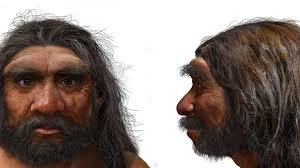A digital reconstruction of a million-year-old skull found in China is challenging long-held ideas about when and where humans evolved. The study suggests that humans may have split from their ancient ancestors 400,000 years earlier than previously believed — and possibly in Asia, not Africa.
The skull, known as Yunxian 2, was first discovered in 1990 in Hubei Province, China. For years, scientists thought it belonged to Homo erectus, one of our early ancestors. But new reconstruction technologies, including advanced CT scanning and 3D modeling, show that Yunxian 2 has features closer to more recent species, such as Homo longi (Dragon Man) and even Homo sapiens.
Researchers say the findings could help solve the long-debated “Muddle in the Middle” — a confusing period in human evolution between 1 million and 300,000 years ago.
“This changes a lot of thinking,” said Chris Stringer, an anthropologist at London’s Natural History Museum who co-authored the study.
“It suggests that by one million years ago, our ancestors had already split into distinct groups.”
If true, this would mean that Neanderthals, Homo sapiens, and other early human relatives may have appeared much earlier than scientists thought.
Traditionally, scientists believed that all early humans came out of Africa before spreading across the world. But the Yunxian 2 findings suggest that East Asia may have played a bigger role in human evolution than once assumed.
“This is potentially a big change,” said Michael Petraglia of Griffith University’s Human Evolution Centre, who was not part of the study. “It suggests Asia could be central to our story.”
Not all scientists are convinced. Andy Herries, an archaeologist at La Trobe University, said fossil shapes alone are not always reliable for proving evolutionary links.
“Genetic histories sometimes tell a very different story,” he said.
Other experts called the study “provocative” but urged caution, noting that many questions remain about how different species of humans evolved and interacted.
The discovery adds to growing evidence that human evolution was far more complex and multi-branched than once thought. Just in 2021, researchers identified Homo longi (nicknamed Dragon Man) as a new species closely related to us.
“Fossils like Yunxian 2 show just how much we still don’t know about our origins,” said Stringer.



